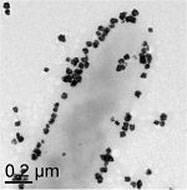- Number 287 |
- May 25, 2009
A. dehalogenans makes uranium less mobile, less soluble, less risky

Researchers investigated
mechanisms involved in reducing
uranium solubility with the
bacterium A. dehalogenans.
At DOE's Hanford Site, uranium is migrating through the ground toward the Columbia River. Researchers led by DOE’s Pacific Northwest National Laboratory recently showed that the bacterium Anaeromyxobacter dehalogenans can efficiently reduce the solubility of uranium, halting its migration. The bacterium uses either organic carbon or hydrogen as an electron donor or energy source to change the migratory uranium into a stationary form. This research was made possible by close collaboration with Georgia Institute of Technology and University of Illinois at Urbana-Champaign and resources at DOE’s EMSL.
[Kristin Manke, 509.372.6011, kristin.manke@pnl.gov]
